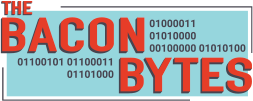In the technology space, seemingly every year there is a new “life changing” technology being released. In recent memory it has been VR, AR, and blockchain. Each of these were slated as being a game-changing technology that will “revolutionize” how we work and play.
The most recent life changing technology has is AI and GPT. Everywhere that I consume content, people are talking about AI and that we are now in the era of AI. The fact is, we are not in the era of AI.
Impact of the C-Suite
The push for organizations to integrate GPT into their operations is emanating from the C-Suite. But what has led the C-Suite to approach AI differently from other technologies?
In contrast to VR, AR, and blockchain, where the barrier to experiment and experience is high and demos tend to be on rails, not allowing for true experimentation beyond a demo script, AI was made readily available for experimentation without any configuration or guardrails. This approach sparked the imagination and creativity of the crowd, leading to individual “ah-ha” moments with the technology.
This unique approach to AI, allowing for unrestricted exploration and experimentation, has been a key factor in its rapid adoption and the shift in perspective within the C-Suite. However, as we will explore in the following sections, this does not necessarily herald the dawn of the era of AI.
Why this is not the era of AI
Now with every executive having their own “ah-ha” moment, why is AI not going to be the life changing technology that people are promoting it to be?
Having spent the last week onsite at the M365 Conference, 95% of the people that I talked with gave me reasons why we are not in the era of AI and supporting reasons why this technology will not be life changing for every organization. The reasons can be grouped into three areas: value confusion, lack of framework, and individual identity crisis.
Value confusion
Even with executive sponsorship led by the C-Suite, who understand how transformative the GPT could be, the issue is understanding where an organization can create or capture value using the technology.
In the simplest terms, organizations create value in exchange for value. When zoomed out 50,000 feet to include other organization, this is known as a value network.
The problem is that most people asked to implement GPT inside of an organization don’t understand the organization’s value network and are unable to articulate their organization’s value in the network.
To reinforce the importance of understanding a company’s value to a network, let’s use the example of a drill manufacturer. The value of the drill is the ability to create holes and tighten items together.
A drill company that focuses on improving their operations outside of their value to the network (working on the color of a battery, adding Wi-Fi, meter read outs, etc.), will struggle with selling their product. But using thoughtful consideration of their value, they could create new value with AI. They might create offerings around how to best maintain their drills, an interactive experience for choosing different types of wood for projects, or which types of screws and screw heads work best for a project someone is going to work on.
A company that focuses on improving their operations or products but loses sight of their value in network, will struggle in the era of AI.
Lack of Framework
To oversimplify the components of GPT, here are the three parts:
- Model – machine learning code that was trained to create an output
- Grounding data – information used to make the model relevant
- Prompt – what you ask the model to return
While these core parts are understood by many, most struggle with creating framework to utilize these to create or capture value.
First is creating a value framework for how they evaluate ideas based on a foundational understanding of the organization’s current and future value to their network.
Second is creating a technical framework. A technical framework creates a structure for technical components to be created and connected. Speed to market will be increased when development teams utilize a technical framework that is consistent across the organization.
Without a framework, organizations will get stuck in analysis paralysis always running pilots and never anything more. Frameless organizations will fail in an era of AI.
Frameless organizations will fail in an era of AI.
Individual Identity Crisis
The fundamental reason that this is not the era of AI will be lack of adoption.
Professional service organizations rely heavily on people as the central contributors to the organization’s value creation process. While product companies have already integrated AI and ML into their value creation efforts, incorporating the advancements of GPT into the value creation process necessitates a fresh engagement model for their workforce
For AI to impact key value creation areas, people will need to incorporate and change their current processes.
Changing habits is fundamentally hard, even when someone knows that there is value in the exercise. Even with the appropriate tools in hand. Even with the encouragement from executive leadership.
Organizations with people who find their identity in creating value manually will fail in an era of AI.
AI Hype: A Reality Check
In conclusion, despite the widespread buzz around AI and GPT, we find ourselves not truly in the era of AI. While the C-Suite looks to empower the integrating of GPT into operations, several challenges persist.
As we navigate this landscape, let’s remember that even the best technology, like an unused mouse trap, remains ineffective unless put to practical use. We stand on the edge of AI’s potential, but true transformation lies in our ability to harness it effectively.
We are not yet in the era of AI

